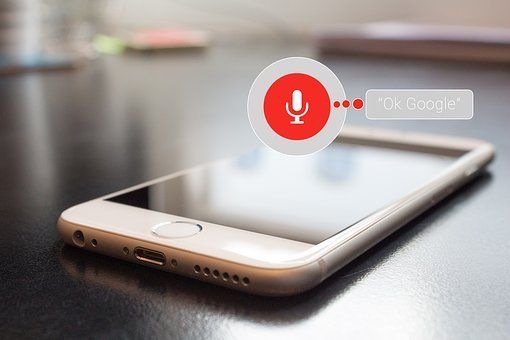Voice search: SEO strategies for 2019

Digital Assistants have arrived, and they’re here to stay. The emergence of home assistants by big-name players like Amazon, Apple, and Google along with voice search functions built within smartphones has made it easier than ever for consumers to find information on the internet.
SEARCH BEHAVIOR EVOLVES
What started as a fad based on the fascination with new technology has turned into a much-used resource for consumers. According to a BrightLocal Study, 58% of consumers have used voice search to find local business information in the last year, and 46% of those consumers look for info daily.
Consumers are no longer apprehensive about using voice commands; they have become comfortable seeking verbal guidance for full inquiries and local business information.
SEO: LOOKING TO THE FUTURE
This shift in search behavior is critical to note for businesses and digital marketers who’ve spent time and dollars on SEO strategies aimed at increasing website traffic. Plans utilizing keywords and short phrases are adept at filtering search results for keyboard searches but don’t quite match up with the way people speak into voice search devices. It’s essential moving forward that marketers evolve their SEO strategy to include optimization for voice search in addition to keyboard search results.
So how does this future strategy look? Digital assistants are engineered to process information in the same manner that we speak. For example, one would say “Alexa, where is the nearest kid’s shoe store?” instead of “kid’s shoe store.” SEO strategies need to evolve to include more conversational searches, including long-tail keywords. Because we speak more conversationally into voice search, our use of “keywords” will inherently be more long-tail. Using keyword phrases that are three to five words in length as opposed to one to three will match up with voice search behaviors better than the shorter keywords. This strategy also provides another level of competitive advantage for small businesses in particular. Because a local clothing retailer may not be able to compete with big-box retailers in search, using more specific long-tail keyword phrases will help them stand out in local voice results.
WEBSITE EFFICIENCY
Additionally, an efficient HTTPS website helps a business prepare for voice search. Page speed plays a role in voice search returns, with the average voice search page loading in 4.6 seconds. Optimizing your website for efficient load times is vital. Consider doing an internal audit of your site and more specifically, the content flow. Is it easy to read with short, concise answers? According to Google, the average voice search result is written at a 9th-grade level. Ensure that the content on your website is easily obtainable by voice search and formatted for a straightforward relay.
Now that we've all learned some tips to improve our SEO in 2019, its time for lunch! "Alexa, ask restaurant finder to find great tacos in Madison."










